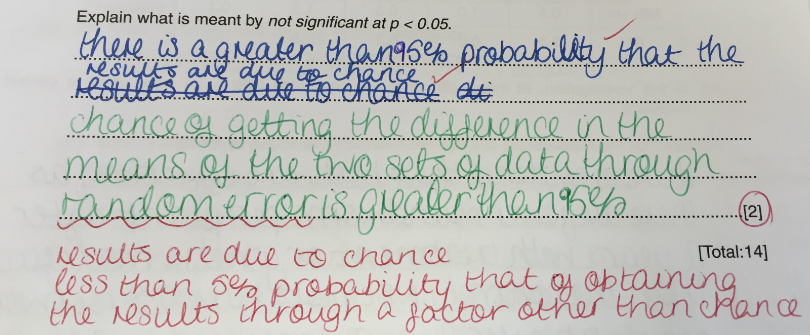Despite what one of my colleagues might think (don’t ask!) the Pomodoro technique is a way of helping focus attention over a short period of time. It helps to break up uninteresting or hard work, not all people need to use it but it can be a valuable tool for students overwhelmed by revision and something that I would advise they at least try. Essentially you set a timer for 25 minutes and start working – during this time there should be no access to phones, internet, talking or any other distractions – once the timer starts you are on the clock until the 25 minutes is up. There is much more detail about this process in A Mind for Numbers by Barbara Oakley, which I would highly recommend. And if you are into R2D2 you’ll want to read the mention at the bottom of Nick Dennis’ post.
Having spoken to my Upper Sixth about this method since September I finally made them work in this way during a lesson on Monday. After five minutes of setting out the task and ensuring everyone had what they needed, we set off on 25 minutes of focused revision. Everyone was engrossed in their work, actively revising by making resources, answering questions or testing their knowledge. Following this period of deep concentration I encouraged students to get up and take a stroll around the classroom. After this short break we reconvened and students were then free to work as they wished, most had questions to ask. Either I answered them or they came to agreement in discussions. Once again everyone was on task. They felt this exercise was very productive and something they will try independently in their own time.
The Pomodoro technique has become one of my favoured ways of working for many tasks throughout the day. However, I do not always stick to working for just 25 minutes. Sometimes I find that I am on a roll and want to finish the report or marking I am working on. Very rarely do I ever end early. Once again I would suggest that this is not necessarily a method for everyone, but definitely worth trying. I find it most helpful during those odd periods where I feel listless and lack the drive to “eat my frogs” (to use another term from A Mind for Numbers). And if you are wondering why it is called Pomodoro, this is due to the use of a tomato-shaped kitchen timer by Francesco Cirillo, the originator of the idea.
Monday’s lesson was a double, so after the Pomodoro task I handed out the old staple of revision lessons – a past exam paper. Once again I had a particular trick that I wanted students to use to help with the revision process. It has been something I have urged them to do but thought that modelling it in a lesson would help pupils see the benefits. I call this method the three pen technique, so called because you need three different coloured pens (as I type this I realise that requiring pens and the need for them to be of different hues has stirred up a lot of discussion in the past. I suggest you read this surreally brilliant blog by Whatonomy as a way of catching up on this). E.g. blue, green and red. Students would complete the paper under the following conditions:
- Using the blue pen and under timed exam conditions, answer all questions on the paper.
- Using the green pen and with the help of notes, textbooks or a classmate, add to the answers given in step 1 and finish the paper if necessary.
- Using the red pen use a mark scheme to add further details to the paper.
Come revision time I have used this technique for a while and in a number of different environments. Here are some examples of step 2 and step 3 from a student on course for a high grade:
Step 2:

Step 3:

And another step 3:

Should students complete a series of papers in this way it is interesting to see how the proportions of each colour change. In many ways this acts as a crude diagnostic test to see why students are losing marks. E.g. Lots of blue and red but little green can show a lack of understanding or poor choices of selecting information from their notes (or indeed poor notes to work from). Similarly a lack of blue denotes a student has not committed to memory the key aspects of a topic. It is easy to see how the combinations can help a teacher infer where a student is in terms of their revision; therefore making suggestions to help the student better prepare for their examination. It is also easy to discuss with a student how they might take this way of working as an opportunity to self-assess where they need to target revision. Therefore helping a little with the journey towards independent learning.
So there we have it. Two simple ideas that have been around for ages but can help students as they embark on revision. Both have the potential of making a student more independent and go a little further to taking ownership of their revision. And if the pen is mightier than the sword, imagine how mighty three pens are!
